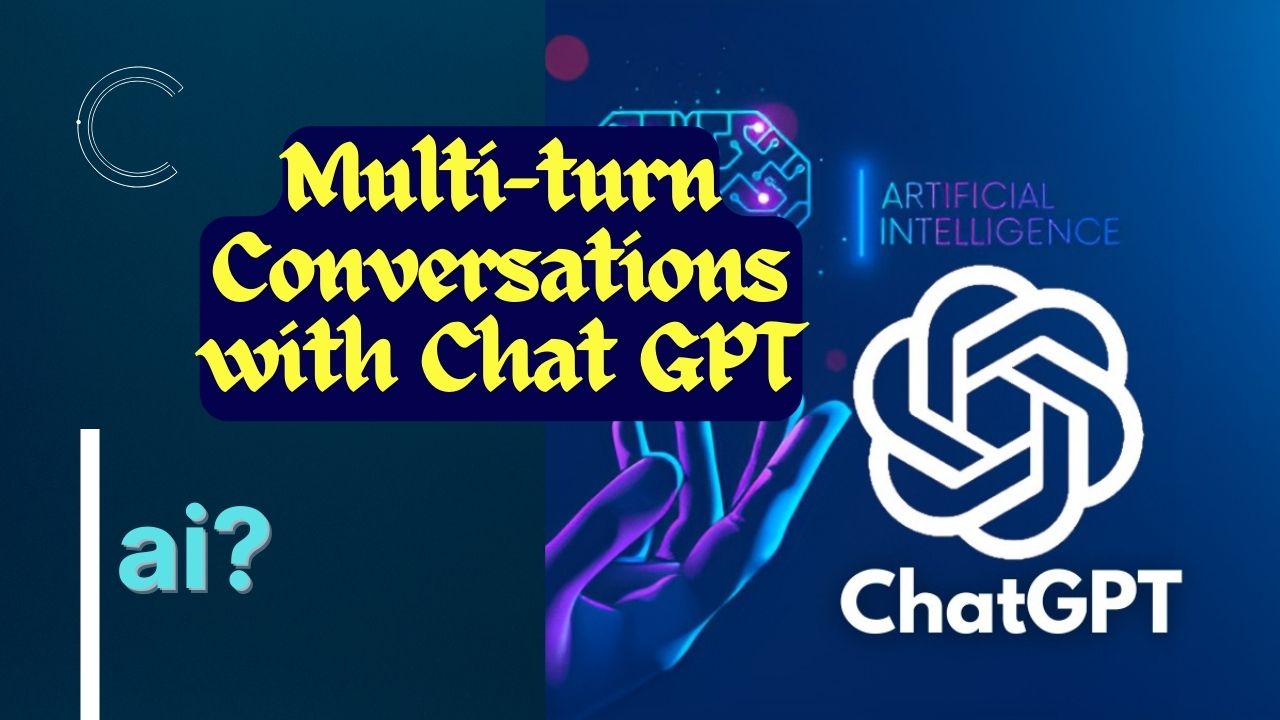Table of Contents
Understanding Multi-turn Conversations
Defining Multi-turn Conversations
Evolution of Chatbots in Conversations
The Role of GPT in Multi-turn Conversations
Introducing GPT Technology
GPT's Language Comprehension and Generation
Building Context in Conversations
Contextual Understanding in Chatbots
Importance of Context for Meaningful Conversations
Enabling Dynamic Interactions
Adapting to User Inputs Over Turns
Personalization and User Experience Enhancement
Challenges and Solutions
Dealing with Ambiguity and User Intent
Mitigating Biases and Inaccuracies
Real-world Applications
Customer Support and Issue Resolution
Virtual Shopping Assistants
Educational and Learning Platforms
Conversational AI Ethics
Ensuring Privacy and Data Security
Transparency and Disclosure in AI Interactions
The Future of Multi-turn Conversations
Advancements in NLP and AI
Human-Machine Collaboration and Synergy
Understanding Multi-turn Conversations
Defining Multi-turn Conversations
Interactions between users and AI systems that span numerous exchanges or turns are referred to as multi-turn discussions. Multi-turn dialogues, as opposed to single-turn interactions, in which a single query is met with a single response, entail a succession of inputs and outputs, resulting in a more fluid and genuine discourse.
Evolution of Chatbots in Conversations
Chatbots have progressed from offering programmed responses to creating contextually relevant answers using machine learning algorithms and NLP approaches. This innovation has prepared the way for multi-turn discussions in which consumers can communicate with AI systems for extended periods of time.
The Role of GPT in Multi-turn Conversations
Introducing GPT Technology
OpenAI's GPT, or Generative Pre-trained Transformer, is a cutting-edge AI language model. It is intended to comprehend and generate human-like prose, making it an ideal choice for multi-turn dialogues.
GPT's Language Comprehension and Generation
The architecture of GPT enables it to perceive linguistic nuances by examining the context of each word in respect to the preceding ones. GPT is able to generate logical and contextually relevant responses, resulting in meaningful multi-turn discussions.
Building Context in Conversations
Contextual Understanding in Chatbots
Context is critical in human talks, and recreating it in AI encounters is critical for natural communication. GPT-based chatbots remember the context from previous turns, ensuring that the conversation continues rationally.
Importance of Context for Meaningful Conversations
GPT can read ambiguous inquiries, disambiguate homonyms, and offer appropriate results thanks to contextual awareness. This capacity to keep context creates interesting and instructive talks.
Enabling Dynamic Interactions
Adapting to User Inputs Over Turns
Users frequently submit inputs that refer to previous encounters in multi-turn dialogues. Because GPT remembers past conversations, it can adapt to these allusions, resulting in a smooth and consistent conversation flow.
Personalization and User Experience Enhancement
GPT can tailor responses based on the user's history, preferences, and tone. This personalized touch improves the user experience and creates the impression that they are talking with a skilled interlocutor.
Challenges and Solutions
Dealing with Ambiguity and User Intent
Ambiguous inquiries are prevalent in human language, and GPT excels at determining intent based on context. Continuous study, however, is required to increase its accuracy in disambiguating complicated inputs.
Mitigating Biases and Inaccuracies
Because of its training data, GPT may produce biased or erroneous results. To address this, constant efforts must be made to improve training data and integrate bias-detection algorithms.
Real-world Applications
Customer Support and Issue Resolution
Multi-turn chatbots are increasingly being used in customer care, patiently and accurately leading users through troubleshooting stages and issue resolution.
Virtual Shopping Assistants
E-commerce platforms use multi-turn dialogues to help customers find products, make purchasing decisions, and get answers to questions about products or services.
Educational and Learning Platforms
Educational chatbots driven by GPT provide individualized learning experiences, adapting to students' learning paces and delivering explanations adapted to individual requirements.
Conversational AI Ethics
Ensuring Privacy and Data Security
Because discussions contain sensitive information, strong data security measures are required to preserve user privacy and prevent illegal access.
Transparency and Disclosure in AI Interactions
When dealing with an AI system, users should be informed in order to preserve transparency, manage expectations, and promote trust.
The Future of Multi-turn Conversations
Advancements in NLP and AI
Multi-turn discussions will become more sophisticated as NLP and AI technologies progress, blurring the barriers between human-human and human-AI interactions.
Human-Machine Collaboration and Synergy
In the future, AI systems and people will most likely collaborate to complete tasks efficiently, with AI giving vital insights and help.
Conclusion
Multi-turn talks with Chat GPT have changed the way we interact with AI systems. The capacity to conduct fluid, context-aware interactions opens up a world of possibilities across businesses. While problems remain, continued research and development will drive the advancement of AI conversation systems, paving the way for a future in which human-machine collaboration is seamlessly interwoven.
Multi-turn Conversations with Chat GPT: FAQs
Can GPT-based chatbots understand informal language?
Yes, GPT-based chatbots excel at recognizing and creating informal language, resulting in more natural conversations.
How can multi-turn conversations benefit businesses?
Businesses can employ multi-turn conversations to provide individualized customer service, improve user experience, and resolve issues.
Are there limitations to GPT's contextual understanding?
While GPT is skilled at preserving accurate context, complex or highly specialized topics may provide issues.
What measures are taken to address biases in AI responses?
To eliminate biases in AI replies, developers are continually working on refining training data and creating bias-detection algorithms.
How might AI-augmented education look in the future?
AI-powered education in the future could include personalized lesson plans, real-time feedback, and adaptable learning routes for pupils.
Written by: Md Muktar Hossain
























